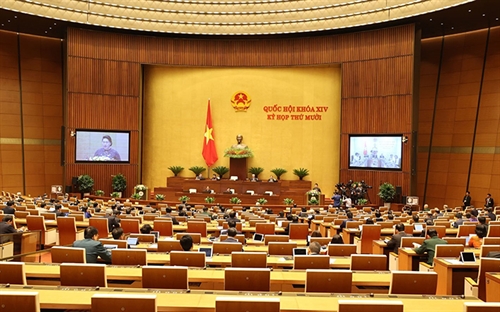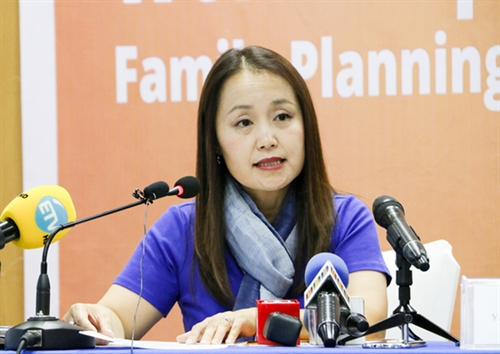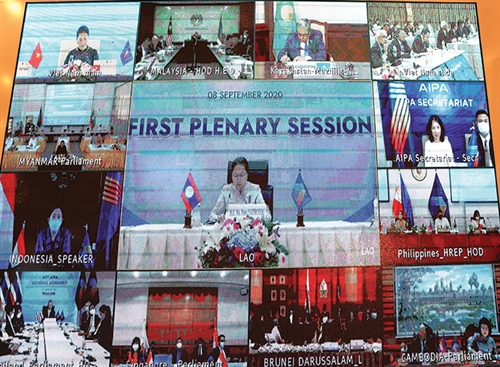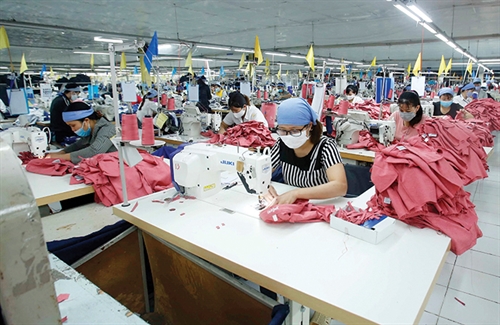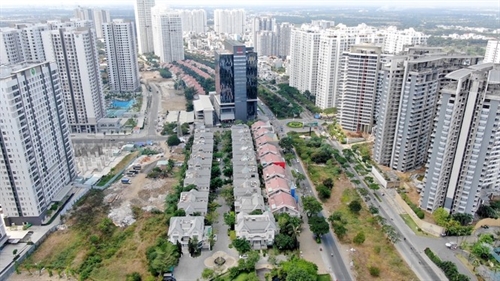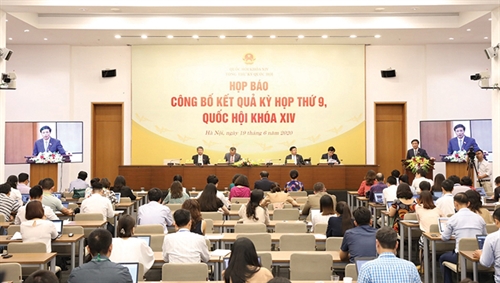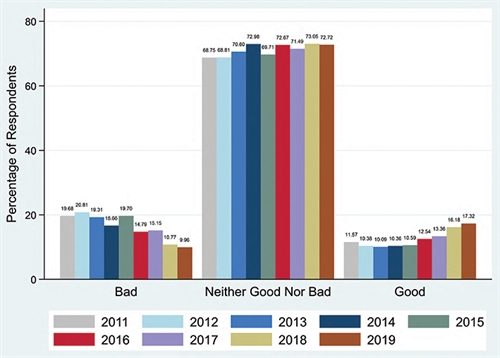The new Labor Code was passed last November with major amendments and will take effect from the beginning of next year. Compared to the Labor Code which was enacted for the first time in 1994 and revised four times in 2002, 2006, 2007 and 2012, the 2019 Labor Code (the Code) has fundamental and comprehensive revisions and becomes a new legal framework facilitating the building of harmonious, stable and progressive industrial relations in the context of a socialist-oriented market economy and making Vietnam’s labor law better match international labor standards and serve the international integration process of the country.
Dr. Nguyen Van Binh[1]
The Code enacted to meet practical requirements
The promulgation of the Code has helped redress difficulties and problems arising in reality to meet new requirements of administration of a developing and rapidly changing labor market.
Reality in recent years shows that the labor market has seen rapid changes and developments. How a person works for another person or for an enterprise has become flexible and no longer as simple and traditional as the way garment or footwear workers work for a certain employer with specific jobs and workplaces. Nowadays it is easy to see shippers for online sellers, staffs of call centers, persons collecting electricity, water and phone bills, sale and marketing staffs, and home-based accountants, etc. The above changes mainly stem from the flexible and creative development of the labor market, which will occur more rapidly and vigorously with the application of science and technology, especially the impacts of Industry 4.0. In response to such changes, the Code has put forth important amendments aiming to protect the new categories of workers mentioned above and also protect workers without industrial relations in the non-official sector.
The Code also demonstrates Vietnam’s fulfillment of international commitments as a responsible member of the international community in the process of global integration.
The flexible development of the labor market was accompanied by the increasingly intensive international integration process through different international legal frameworks. Together with commitments within the framework of the United Nations and International Labor Organization (ILO), Vietnam has also made labor commitments upon its accession to new-generation free trade agreements (FTAs) like the Comprehensive and Progressive Agreement for Trans-Pacific Partnership (CPTPP) and the European Union-Vietnam Free Trade Agreement (EVFTA). The Code has not only formed a modern legal framework for building harmonious, stable and progressive industrial relations through dialogue and collective bargaining on the market principles but also will facilitate international integration and market access for Vietnamese businesses during the globalization process.
Major objectives of the Code
One of the objectives of the Code is to institutionalize the Party’s viewpoints and major guidelines on improvement of socialist-oriented market economy institutions[2], international economic integration upon Vietnam’s accession to new-generation FTAs[3], reform of wage policies[4], reform of social insurance policies[5], and formation of a legal framework on labor with a view to ensuring synchronous and inter-connected development of the labor market and development of human resources, especially high-quality ones[6].
The Code also aims to incorporate international labor standards into domestic law as suitable to the country’s socio-economic development level and political institutions, especially fundamental international labor standards being commitments in new-generation FTAs. Worthy of note, the realization of this objective will also contribute to improving the legal framework on administration of industrial relations toward modernity, thus effectively helping build harmonious, stable and progressive industrial relations in line with Directive 37-CT/TW of September 3, 2019, of the Party Central Committee’s Secretariat[7].
Other important objectives of the Code are to better guarantee the legitimate rights and interests of employees and employers and to ensure harmony of interests of employees and employers and interests of the country in suitability with the socio-economic development level of Vietnam.
Improving laws to build harmonious, stable and progressive industrial relations
In fact, limitations still exist in industrial relations in enterprises although certain progress has been recorded in building industrial relations to be harmonious, stable and progressive.
Dialogue and collective bargaining are the most important forms and play a central role in establishing rights and obligations of parties to industrial relations. However, these forms have not made substantial contributions to the building of harmonious, stable and progressive industrial relations. As reported by the Vietnam General Confederation of Labor (VGCL), by May 2018, nearly 28,000 collective labor agreements at enterprises had been signed, bringing the rate of businesses employing 10 or more employees that sign collective labor agreements to 21 percent. Nevertheless, it is worrisome that of the signed agreements, only 10.72 percent were ranked level-A, which are agreements having the contents on wage more beneficial to employees. Meanwhile, over 65 percent of contents of the signed agreements repeated relevant legal provisions and merely 15 percent had contents on certain bargaining between trade union organizations and employers[8].
As collective bargaining remains formalistic, labor disputes and strikes still occur at several enterprises that have already signed collective labor agreements. It is worthy to think that out of more than 6,000 strikes that have taken place since 1995[9], none derived from collective bargaining, none was carried out according to law-specified procedures and none was held and led by trade union organizations under regulations.
The above limitations are attributable to two major causes. Firstly, the capability of trade union organizations in some enterprises fails to meet requirements in carrying out dialogue and bargaining and substantially and effectively protecting the lawful and legitimate rights and interests of their members and employees. Secondly, the current regulations on employees’ representative organizations, dialogue, bargaining and settlement of labor disputes and strikes reveal problems and fail to meet practical requirements of industrial relations in a market economy as well as international integration requirements.
To deal with this, the Party Central Committee has issued a series of documents on comprehensive solutions to issues arising in industrial relations, such as employees’ representative organizations (Resolution 06-NQ/TW[10]); collective bargaining about wage in the business circle (Resolution 27-NQ/TW[11]); and building of harmonious, stable and progressive industrial relations (Directive 37-NQ/TW[12]).
The Code has institutionalized major viewpoints and guidelines of the Party in the above documents. Regarding employees’ representative organizations outside the VGCL system, the Code provides three major contents: (i) rights of employees in the establishment of and accession to their representative organizations; (ii) conditions on leaders and heads of representative organizations; and (iii) guidelines, purposes ad charters of representative organizations. The Code assigns the Government to stipulate in detail issues concerning the above contents and some other contents such as dossiers and procedures for registration of employees’ representative organizations; competence and procedures for grant and revocation of registration certificates; state management of finance and assets of representative organizations; and consolidation, merger, division, splitting and dissolution of representative organizations and the right of these organizations to link one another.
Employees’ representative organizations must make registration with competent state agencies and may act as representatives to protect the lawful rights and legitimate interests of employees within the scope of industrial relations at the enterprises. The provisions on contents and scope of operation of representative organizations are those on such organizations’ participation in the process of carrying out dialogue, collective bargaining and settlement of labor disputes, especially bargaining with employers about wage and working conditions for employees.
With a view to ensuring the stability and harmony of industrial relations, the Code prescribes collective bargaining on the two fundamental principles. First, an enterprise may have more than one employees’ representative organization but may sign only one collective bargaining document and labor agreement to ensure that collective bargaining is carried out in a way that does not obstruct normal production and business operations of the enterprise. Second, a collective labor agreement, regardless of having undergone bargaining by any representative organization, may be signed only after it is voted for by more than half of employees of the enterprise to guarantee that employees have the final voice in approving the agreement.
With the aforesaid principles, the Code states that in case an enterprise has more than one employees’ representative organization, only one of them is entitled to carry out collective bargaining if it is the largest employees’ representative organization at the enterprise and the minimum ratio of its members to the total employees in the enterprise reaches the law-specified level. If none of the organizations satisfies these conditions, they may voluntarily collaborate with one another to carry out collective bargaining, provided that the total number of their members must reach the above minimum ratio.
The Code amends the provisions on labor disputes and strikes by not requiring the settlement of a dispute by a sole way with different steps whereby the dispute cannot be dealt with if any step is not taken. The Code says that after compulsory conciliation procedures are completed, the parties may, depending on the type of their dispute, choose different forms of dispute settlement, e.g., arbitration, trial by court, or strike. It also increases the competence and scope of application of arbitration procedures to the settlement of different types of labor disputes, including also rights-based individual labor disputes and collective labor disputes.
The above provisions of the Code have formed a legal framework for administration and development of industrial relations toward modernity and conformity with relevant international standards. It can be said that the Code aims to secure that industrial relations operate on the principles of a socialist-oriented market. Specifically, it guarantees flexibility, increases autonomy, and empowers parties to industrial relations to decide on their own issues through dialogue, bargaining and agreement in accordance with law. These provisions have been appreciated by the ILO and European Union.
Protecting employees and developing human resources in the context of industrialization and modernization and application of science and technology
The Code introduces two important revisions for expanding the scope of its application and better protecting employees.
The first revision is about the definition of “employee”. The Code defines employee as a person who works for an employer as agreed upon between the two parties, is paid wage, and is managed, directed and supervised by the employer. That means, labor contract is no longer a compulsory factor for identifying whether a person is an employee in order to be protected under the Code. The total number of employees in this category is around 20 million.
Second, the Code expands the scope of application of some provisions, mainly the provisions on working conditions and protection of some specific categories of employees such as minor employees. With this expansion, such provisions will apply to the entire workforce of over 55 million.
The Code also ups the retirement ages in adaptation to population aging and assurance of human resources for future development.
The increase of retirement ages is necessary and of strategic and long-term significance for the country’s benefits. Vietnam has entered a period with a rapidly aging population. The country will have to face labor shortage if not increasing retirement ages. According to the World Health Organization, the healthy life expectancy of Vietnamese people at age 60 is 18.8 years for women and 15.2 years for men, or 17.2 years on average, making the country ranked 41st out of the total 183 countries in this regard[13]. The current retirement age is 60 for men and 55 for women but in fact, up to 70-72 percent of men aged 60-65 years and women aged 55-60 years still work. Therefore, the adjustment of retirement ages is one of the measures to recognize and guarantee the people’s right to work. Such adjustment also aims to narrow the gap of retirement ages between male workers and female workers and promote gender equality in the labor market, ensuring adherence to the non-discrimination principle under the United Nations’ Convention on the Elimination of All Forms of Discrimination against Women to which Vietnam has acceded since 1982. This is one of the important measures helping ensure financial balance for the retirement and survivorship allowance fund in the long run.
The increase of retirement ages is necessary but directly related to hundreds of thousands of enterprises and tens of millions of workers. This is a hard-to-settle and complicated issue not only for Vietnam but also for all other countries worldwide. It requires the formulation of a plan on adjustment of retirement ages so as not to exert adverse impacts on the labor market in the country and to make employees in particular and the people in general feel secure.
To respond to this, the Code stipulates that the retirement ages will be raised according to a roadmap, i.e., three months every year for men and four months every year for women, but not be increased immediately to 62 years for men and 60 years for women. The retirement ages may be reduced for persons doing hard, hazardous or dangerous jobs or working in areas with socio-economic difficulties and persons suffering working capacity decrease. Meanwhile, persons with high professional and technical qualifications may retire later if they are physically fit and wish to continue working while employers need them.-
- To improve the laws on labor and trade unions. To include international commitments to which Vietnam has acceded in domestic laws, ensuring conformity with the Constitution as well as political institutions and socio-economic conditions of the country, thus facilitating the building of harmonious, stable and progressive industrial relations.
- To improve a mechanism for dialogue, bargaining and agreement among entities involved in industrial relations with regard to employment, wage, working conditions and welfare regimes; and minimum wage level guaranteeing the minimum living standards of employees and their families in the light of the Resolution of the 7th Plenum of the 12th Party Central Committee on reform of wage policies.
- To improve regulations on the rights and obligations of employees’ representative organizations and employers’ representative organizations in dialogue, questioning, and exercise of democracy at enterprises and the negotiation, conclusion and implementation of collective labor agreements in accordance with law.

